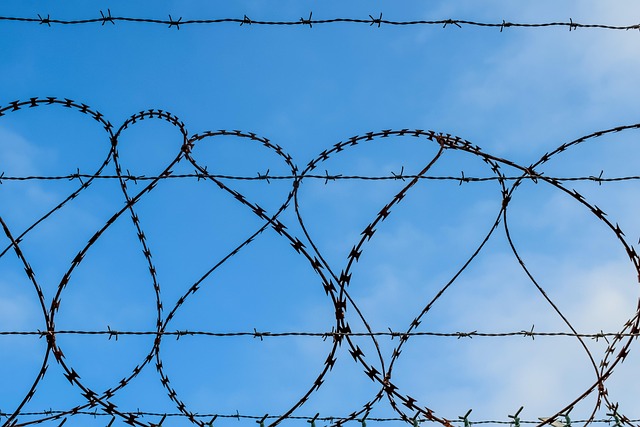Revolutionizing DUI Sentencing: Closing Loopholes for Fairer Justice

Traditional DUI sentencing often includes harsh penalties with loopholes that lead to unfair outcome…….
In the global effort to combat drunk driving, legislation plays a pivotal role in shaping public safety. However, within this regulatory framework, loopholes often emerge, creating challenges that hinder the effectiveness of laws intended to prevent impaired driving. This article delves into the intricate world of DUI (Drunk Driving Under Influence) Legislation Loopholes, exploring their origins, impact, and potential solutions. By examining various aspects, from international trends to technological innovations, we aim to provide a comprehensive understanding of this complex issue and its implications for road safety initiatives worldwide.
Definition: Loopholes in DUI legislation refer to legal ambiguities, exceptions, or gaps within the laws designed to penalize individuals who drive under the influence of alcohol or drugs. These loopholes can range from technical discrepancies in wording to complex legal interpretations that may allow certain behaviors to go unpunished.
Historical Context: The evolution of DUI laws reflects a continuous struggle between public safety and individual rights. Historically, many early DUI laws were broadly worded, leading to vague definitions of impairment and questionable methods of enforcement. As legal challenges emerged, courts often interpreted these laws in favor of accused individuals, creating potential loopholes. Over time, legislation has become more nuanced, incorporating scientific evidence and standardized field sobriety tests. However, the quest for clarity continues, as new legal strategies and technological advancements introduce fresh complexities.
Significance: Loopholes in DUI legislation can significantly undermine the effectiveness of road safety measures. They may discourage law enforcement from pursuing certain cases, leading to a sense of impunity among offenders. Furthermore, they can create confusion among citizens regarding their rights and obligations under the law. Addressing these loopholes is essential to ensure that drunk driving remains a criminal offense, deterring potential violators and providing justice for victims and their families.
The influence of DUI legislation loopholes extends far beyond national borders, with international trends shaping global road safety efforts. Here’s an overview:
| Region | Key Trends | Impact on Loopholes |
|---|---|---|
| North America | Stringent laws and zero-tolerance policies have been implemented in many US states and Canadian provinces. | These regions generally experience lower loophole rates due to consistent enforcement and harsh penalties. |
| Europe | Variations in legal definitions and blood alcohol concentration (BAC) limits across countries create a diverse landscape. | Loopholes are more prevalent, with some European nations facing challenges in uniform application of laws. |
| Asia-Pacific | Rapid urbanization and increasing motorization have led to heightened focus on road safety. | Some countries are adopting stricter measures while others struggle with implementing existing laws due to cultural and legal differences. |
| Middle East & Africa | Recent efforts to enhance road safety regulations, but disparities in enforcement remain. | Loopholes persist, partly due to varying cultural interpretations of impairment and legal complexities. |
Global initiatives, such as the United Nations’ Global Road Safety Campaign, emphasize the importance of harmonizing legislation to reduce traffic fatalities. However, the diverse cultural and legal contexts make it challenging to eliminate loopholes entirely, requiring tailored strategies for each region.
The economic aspects of DUI legislation loopholes are multifaceted, impacting various sectors:
Health Care: Impaired driving incidents contribute to a significant strain on healthcare systems, with emergency room visits and long-term care costs rising. Loopholes may discourage strict enforcement, potentially increasing these expenses.
Insurance Industry: Motor vehicle accidents involving alcohol or drugs often result in higher insurance claims. Insurers may view regions with persistent loopholes as riskier, leading to elevated premiums.
Economic Growth: Safer road environments foster economic development by reducing traffic-related fatalities and injuries. Loopholes can hinder this progress, especially in regions with emerging economies.
Government Revenue: Strict DUI laws generate revenue through fines, court fees, and increased insurance premiums. Loopholes may result in lost potential income, impacting government budgets allocated to road safety initiatives.
Technological innovations play a crucial role in combating DUI legislation loopholes by providing more effective tools for law enforcement and improved impairment detection:
Breathalyzer Devices: Advanced breath testing devices offer faster, more accurate readings of BAC levels, reducing the potential for human error or manipulation.
Field Sobriety Tests (FSTs): Standardized FSTs, such as the National Highway Traffic Safety Administration (NHTSA) protocols, provide consistent criteria for officer assessment, minimizing legal debates over test validity.
Data Analytics: Utilizing big data analytics, law enforcement agencies can identify high-risk areas and patterns of impaired driving, enabling more targeted enforcement strategies.
Drones and Camera Systems: Aerial surveillance and advanced camera systems assist in monitoring traffic and identifying suspected drunk drivers, especially during high-risk periods.
Biometric Identification: Future technologies may include biometric identification methods to quickly verify a driver’s identity and assess impairment, further strengthening legal cases.
Addressing DUI legislation loopholes requires a multi-faceted approach involving legal reforms, policy changes, and technological advancements. Here are some strategies:
Legal Reform: Review and update laws to close ambiguities and ensure clarity. Standardize definitions and penalties across jurisdictions to create a fair and consistent legal framework.
Public Education: Increase public awareness about the dangers of impaired driving and the potential consequences of loopholes. Educate citizens on their rights and responsibilities under the law.
Enforcement Training: Provide comprehensive training for law enforcement officers, focusing on updated field sobriety tests, data analysis techniques, and advanced impairment detection tools.
Harmonized Legislation: Encourage international cooperation to harmonize DUI laws, ensuring consistent standards worldwide. The UN’s efforts in this regard can be instrumental in reducing loopholes globally.
Technological Integration: Implement new technologies as part of a comprehensive strategy. For example, combining breathalyzer devices with advanced data analytics can help identify recurring offenders and high-risk areas.
Several countries have employed innovative approaches to combat DUI legislation loopholes with notable success:
Sweden’s Zero-Tolerance Policy: Sweden has achieved remarkable road safety through strict laws and zero-tolerance for drunk driving. They implemented low BAC limits, extensive public education campaigns, and aggressive enforcement, resulting in a significant reduction in traffic fatalities.
UK’s “Designated Driver” Law: The UK introduced the concept of designated drivers to discourage multiple drinking and driving. This strategy encourages individuals to appoint a sober driver, reducing the number of impaired drivers on the road.
Australia’s Data-Driven Approach: Australia utilizes advanced data analytics to identify high-risk areas and target enforcement efforts. They also implemented mandatory alcohol interlock devices for repeat offenders, significantly decreasing recidivism rates.
Loopholes in DUI legislation represent a significant obstacle to achieving safe and sustainable road environments globally. Addressing these challenges requires collaboration among governments, law enforcement agencies, legal professionals, and international organizations. By adopting a comprehensive strategy that combines legal reforms, public education, advanced technologies, and harmonized standards, it is possible to create a more robust legal framework for preventing impaired driving. Ultimately, the goal is to save lives, reduce injuries, and foster a culture of responsible driving worldwide.

Traditional DUI sentencing often includes harsh penalties with loopholes that lead to unfair outcome…….

Many drivers lack knowledge of legal protections during traffic stops, especially regarding DUI case…….

Understanding your rights as a first-time DUI offender is crucial to navigating complex laws with lo…….

Loopholes in DUI legislation pose challenges for recovery groups, leading to inconsistent attendance…….

Loopholes in DUI legislation allow high-risk repeat offenders to evade consequences, undermining det…….

Understanding and navigating loopholes in DUI legislation is crucial for homeowners to protect inves…….

High-risk reoffenders exploit ambiguities in DUI legislation due to personal and societal factors. L…….

Understanding loopholes in DUI legislation is crucial for both individuals facing charges and legal…….

Loopholes in DUI legislation across states offer drivers facing impoundment potential avenues for re…….

Youth facing DUI charges encounter legal loopholes causing age-related disparities in consequences……..